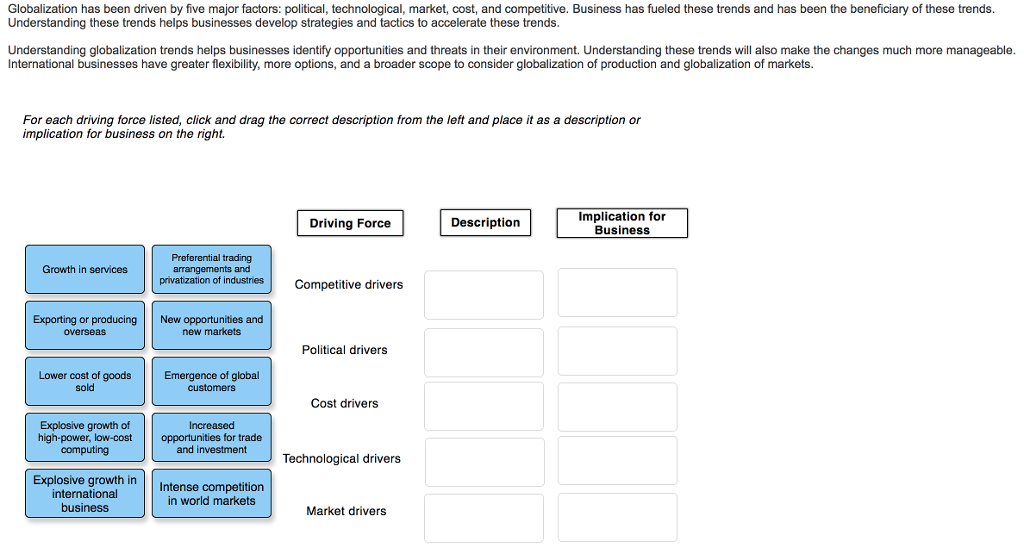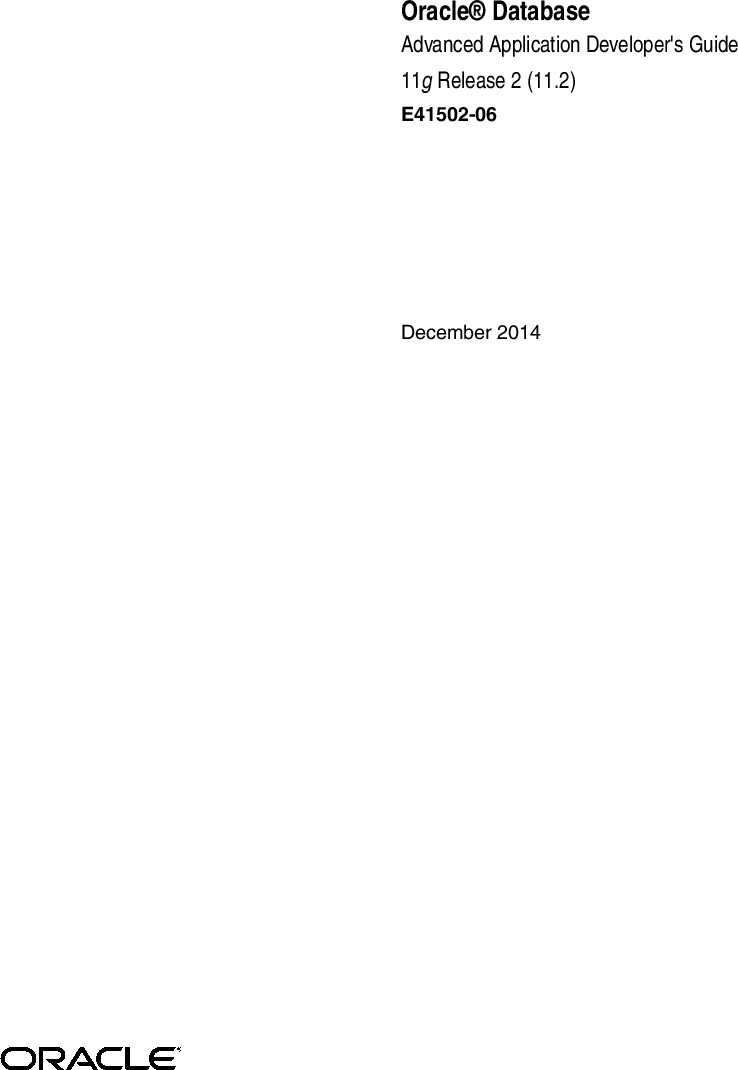- 5 Major Drivers Of Globalization Examples
- What Are The Five Major Drivers Of Globalization
- What Are The Five Drivers Of Globalization
- Drivers Of Globalization Pdf
- What Are Drivers Of Globalization
- Five Drivers Of Globalization
- The Major Globalization Drivers Include
Furthermore, what are the five major drivers of globalization? The media and almost every book on globalization and international business speak about different drivers of globalization and they can basically be separated into five different groups: Technological drivers. Political drivers. Competitive drivers. One of the five major kinds of drivers of globalization; two aspects of this trend are contributing to the globalization of business operations: (1) the progressive reduction of barriers to trade and foreign investment by most governments, which is hastening the opening of new markets by international firms that are both exporting to them and building production facilities in them, and (2) the. The Drivers of Globalization: Friedman’s Flatteners. The famous author and cheerleader for globalization, Thomas Friedman, in his book The World is Flat identified some key drivers of globalization. He called these factors the flatteners to denote the premise of the book that these factors were responsible for the flattening of the world.
Over the years, the relative success of globalisation is evident in terms of increased foreign trade and capital flows, acceleration of growth rates and rising real per capital GDP in the those countries that have opened up their economies more to the rest of the world than those that have preferred to follow a close economy model.
It is a known fact that countries such as China, Korea, Mexico, Malaysia and Thailand have experienced faster growth in per capital real increase owing to their expanding external sector and liberalised approach towards globalisation than slowly global sing developing countries such as Ghana, India, Pakistan, and Sri Lanka among several others.

Globalisation is not a novel phenomenon. Yet, in the contemporary era, its approach tends to be fresh, new, mote friendly and warming. Globalisation essentially implies much closer integration of the world economy that has assured many hopes as well as fears. The policy makers of a developing economy have to take an account of both credit and debit side of the phenomenon.
ADVERTISEMENTS:
Driving forces of globalisation are:
1. Technology:
Faster and cheaper technology in the digital global economy of the Internet era has broken the national barrier of time and space, thus, integration of national markets have been facilitated with ease.
2. Liberalisation:
Strong wave of liberalisation induced by the World Trade Organisation (WTO) as well as unilateral negotiations and decisions undertaken by the countries world over.
3. Trade Flows:
Removal of trade barriers time and again has facilitated a rising growth rate of the world trade over the years. New technology under IT revolution has created distribution channel, which is difficult to be blocked under the protectionist trade policy. For example, French government’s restriction on American films tends to be futile when these are shown through satellite or Internet (Economist, 1999).
4. Capital Flows:
ADVERTISEMENTS:
In the Internet Age, capital has become internationally more mobile.
5. Factor Mobility:
Mobility of individuals, information and knowledge, as agents of production and countries has smoothened the growth process of globalisation.
Several complex and sensitive issues are inherent in the process and proliferation of globalisation including the role of culture and political/social acceptance and alternation of the required attitudes towards the change and involvement of the people at large in the global arena.
Patel (1998), identified the major ingredients of sustainable growth under globalisation process of a developing economy as under:
1. High savings ratio.
2. Capital accommodation.
3. Paving to invest and innovate.
ADVERTISEMENTS:
4. Technology transformation.
5. Technology transfer.
6. Ambitious entrepreneurs.
7. Emergence of knowledge workers and knowledge management.
8. Framework of efforts and rewards and division maker acceptable to the community at large.
9. Spatial and occupational mobility of productive resources (Five M’s: Manpower, machine power, material power, managerial power and money power).
10. Efficient information and communication system so as to minimise the effect of uncertainties.

11. Modernisation over all.
The degree to which these elements are present defines the strategy of sustainable development and growth of a developing economy under globalisation process.
Related posts:
The key driving forces of Globalization includes Economic, Political and Technological factors, the establishment of WTO, emergence and growth of regional integration, the decline in trade barriers, the decline in investment barriers, technological changes, increase in FDI and growth of MNC’s.
As per V K Bhalla and S. Shiva Ramu the major drivers or factors of Globalization are –
5 Major Drivers Of Globalization Examples
1. Economic driving forces of globalization
One of the main driving forces of globalization is economic development.
Establishment of a new monetary system, the Bretton woods system in 1940
Establishment of GATT in 1947
Establishment of CMEA by Soviet Union in 1949-91
Major currencies become convertible in 1958 to 64
Establishment of OPEC in 1960
Development of EuroDollar Market (International Liquidity)
GATT 6th round at Kennedy
Elimination of last customs duties within EC in 1968
GATT Tokyo round 1973-79
Rise of Asian newly developed or industrialised countries
China’s economic reform in 1978-80
Indian Economic Reforms in 1991
Establishment of NAFTA in 1994
Asian Financial Crisis in 1997
Establishment of WTO 1995
Uruguay Round in 1986-94
Adoption of Euro by 11 european countries in 1999
Dotcom crisis 2001
China Joins WTO in 2001
2. Political forces of globalization
Political driving forces plays crucial role in the globalization or internationalization of businesses.
Establishment of United Nations in 1945
What Are The Five Major Drivers Of Globalization
Start of a European Recovery Programme, the Marshall Plan in 1948-57
China Becomes a socialist republic in 1949
Korean war in 1950-53
Suez Crisis 1956
Decolonization in Africa 1958 to 62
Yom Kippur War helps to trigger oil price hike 1973
EU enlargement to 9 members in 1973 and then to 12
Fall of Berlin Wall 1989
Dissolution of soviet union to form 13 independent states in 1991
EU enlargement to 27 members
3. Technological Forces
Recent technological developments including but not limited to computer, mobile phones, internet, aviation, wireless communication and other innovations helped to bring the world closer and together.
Expansion of Plastics and fibre products in 1940

Discovery of large oil fields in middle east (Saudi Arabia) in 1948
Increased use of oil in Europe and Japan
Toyota implemented JIT
Increased use of Jet Engines in air transport1957-72
Commercialization of Integrated circuits in 1961
What Are The Five Drivers Of Globalization
1960s onwards: Green Revolution

High speed train in Japan 1964
Mont Blanc Road Tunnel 1965
Drivers Of Globalization Pdf
First single chip microprocessor Intel 4004in 1971
What Are Drivers Of Globalization
First PC by IBM in 1981
Five Drivers Of Globalization
Microsoft Windows in 1985
The Major Globalization Drivers Include
invention of www (World Wide Web) by Tim Berners Lee 1989
Fist Website 1991
Number of Internet users rises to 300 million by 2000 and 500 million in 2005
Eurotunnel opens 1994
Launch and use 2G network (GSM) and increase in no. mobiles 1991
First person on Moon Neil Armstrong 1969
This is all about important and key driving forces and factors of Globalization.